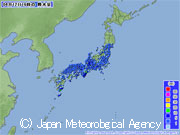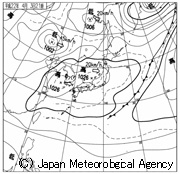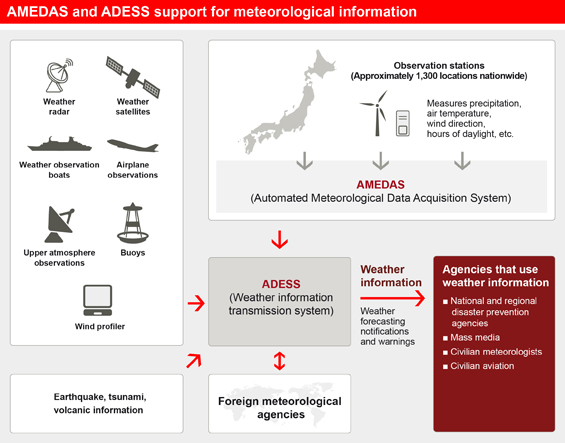Archived content
NOTE: this is an archived page and the content is likely to be out of date.
Japan Meteorological Agency
Challenge – Managing and aggregating huge streams of meteorological data

The Agency uses ADESS (Automated Data Editing and Switching System) to aggregate this information along with meteorological data from other international and domestic weather agencies to forecast the weather and natural disasters. ADESS rapidly distributes this information to disaster prevention agencies, civilian meteorologists and the general public in the form of weather forecasts, weather and tsunami warnings and other weather alerts. ADESS not only improves the accuracy and availability of general weather forecasts, it also helps improve general safety by predicting natural disasters and mitigating their impact.


Solution – Mission-critical levels of availability at attractive lifecycle cost
Fujitsu selected PRIMEPOWER UNIX servers, industry-standard PRIMERGY servers and an ETERNUS storage solution as the basic hardware building blocks. To increase system uptime, Fujitsu clustered the servers with PRIMECLUSTER. Not only does PRIMECLUSTER increase business continuity by failing applications over to a healthy node in the event of a fault, it also simplifies data management.
Fujitsu's Symfoware Server relational database management system increases reliability further by eliminating the risk of data loss during failover. This high-performance security management solution also reduces power consumption through efficient utilization of system resources. On the system management side, Fujitsu deployed its Systemwalker suite for autonomous operation and rapid identification of potential faults. Systemwalker includes tools for basic functions such as system and network administration, performance monitoring, asset management and job management. Last but not least, the Fujitsu Interstage integration platform allows the Agency to continuously visualize and optimize business operations.
Benefits – Greater safety through early prediction of natural disasters
Since going live, the ADESS and AMEDAS platforms have met the Agency's stability and performance requirements. As a result, the Agency is able to deliver rapid and reliable weather forecasts and warning information. The 2011 Tohoku earthquake and tsunami underlined the importance of timely warnings and alerts. As the backbone of Japan's meteorological information system, AMEDAS and ADESS are thus making an invaluable contribution to personal safety and disaster mitigation.


